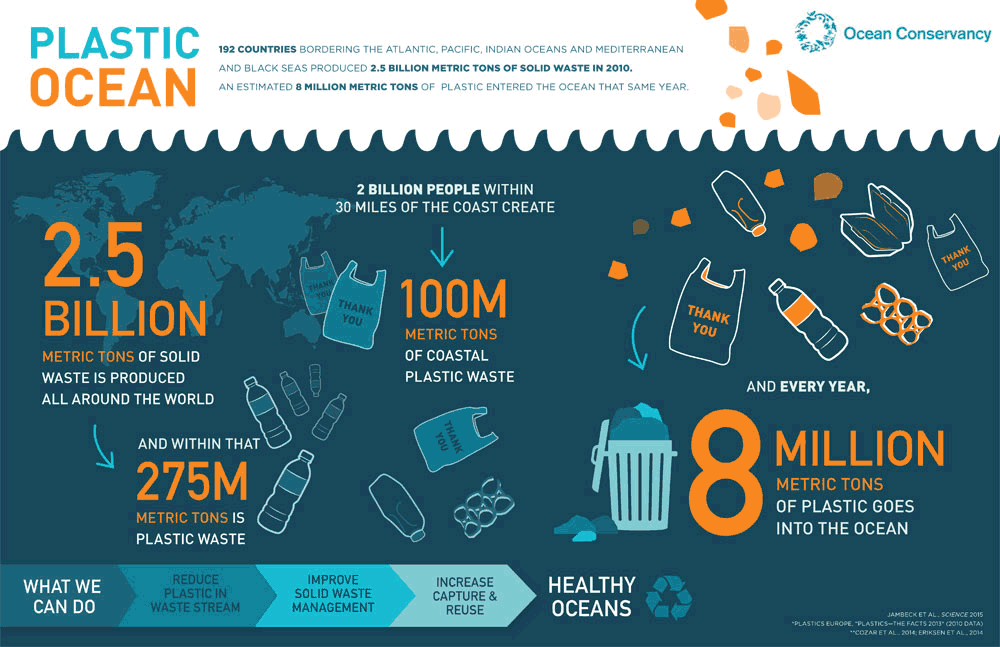
The problem with plastic
Ocean Conservancy Plastics & Pollution

You’ve probably seen videos of these impacts first hand, like a sea turtle with a plastic straw embedded in its nose or a whale entangled in a fishing net, approaching divers that release it from harm. Some of these incidents have happy endings, but in reality, many more do not.
Plastic has been found in more than 60% of all seabirds and in 100% of sea turtles species, that mistake plastic for food. And when animals ingest plastic, it can cause life-threatening problems, including reduced fitness, nutrient uptake and feeding efficiency—all vital for survival.

In fact, plastic production and consumption are predicted to double over the next 10 years.
That means that if we don’t do something now, we could be facing 250 million metric tons in the ocean in less than 10 years. We can’t stand by and watch the impacts of this tidal wave of plastic heading our way—neither failure nor inaction is an option.
← Older Post Newer Post →
